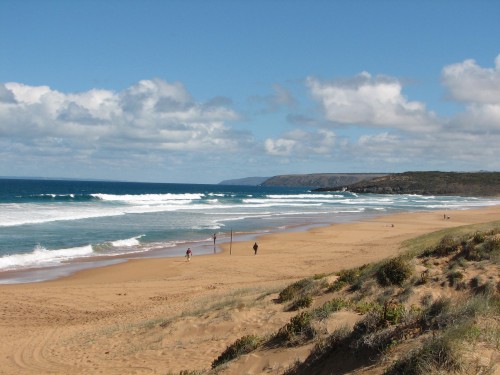Demise of our local bookshop
I love bookshops.
They are my favourite type of shop. I probably spend more time in bookshops than any other type though I should add that I rarely do our grocery shopping. So it was with great sadness yesterday that I visited our local bookshop knowing that it was closing down ths week. As part of a large chain which has been in trouble across the country recently, it was another victim of poor management at the top. The local shop was excellently run but the staff have suffered at the hands of those who should know better.
I guess that this is not an uncommon occurance in the bookshop world these days. Poor management aided by the growth of online shops has seen many shops close. Yes – I’m guilty of buying online too, but usually only books with which I am familiar. Nothing online can replace actually handling the physical object before deciding to buy. Sadly I guess I will have to gradually forego this simple pleasure as more and more bookshops close in the coming years.
What did I buy, I hear you ask? At 50% off I couldn’t resist Geraldine Brooks’ novel People of the book. Strangely, sadly ironic that that was the book I most wanted to buy (read a review here). Are our bookshops in danger of disappearing?

The man and the sea
The man and the sea.
No – not the famous novel written by a far better writer than I’ll ever be. (Hemingway: The old man and the sea.)
This is about a strange man I saw a few months ago. What this man was doing has puzzled me for months, and I’m no closer to discovering what he was doing. My wife and I were at the beach having a late picnic lunch. Nothing unusual about that. Actually, we were not dressed for the beach and so we sat in the car to eat our lunch. It was wild and blustery, threatening to rain at any moment, not like the scene above. That photo was taken at an entirely different beach on a much better day. But I wander off topic.
We were parked in the car park a few metres from some wooden steps leading across the sand dunes and down to the beach. An old rusty station wagon pulled up alongside of our car and a rough looking unshaved man emerged from the driver’s seat. Next, a woman, presumably his wife, and another older woman, possibly his mother, also alighted from the vehicle. They were not well dressed; in fact, they certainly didn’t look attired for the beach at all. The wind whipped their bedraggled hair as they gathered about ten plastic water containers from the rear of the car. The kind that hold about twenty litres.
They carried these down to the water’s edge, depositing them just clear of the waves. The man had no shoes and we watched as he waded into the shallows and proceeded to fill each water container from the sea. As each was filled he placed it beyond the reach of the waves and filled the next one. When all ten were full of sea water, he started carrying them up to the car, struggling through the soft, squeeky sand and grunting with effort up the steps and to the car where he placed them in the back. Five times he made this trip, two containers at a time.
All three then drove off in the car carrying about two hundred litres of salty water in the back. How strange. Why would anyone want to collect sea water – and so much? I’m lost for an explanation of this strange behaviour.
Can any of my readers throw any light on possible reasons?
Of course I was so puzzled I didn’t think of the obvious course of action. I could have asked him! But I didn’t, so I’m left with this conundrum; why?
A writing lesson from the rose
I feel stiff, sore and rather tired after a busy day in the garden. In fact, I’ve had quite a few busy days in the garden in recent days. The soil is nice and damp from the rain we’ve had making it easy to dig. The rain has also seen rapid growth of weeds, so weeding has been a high priority. Consequently this blog has been a little neglected in recent weeks.
One of the projects we’ve been working on is renovating our bed of rose bushes. It now boasts a new border made with recycled railway sleepers. These sleepers are ungoing a third life. After many years holding together the rails somewhere they were recycled as a rainwater tank stand in our backyard. This was made by the previous owner of our home. Last year we emptied and moved the tank to a more convenient location, so the sleepers were surplus to needs until this last week. They are now entering their third useful life. I never realised how heavy those sleepers were until I had to move them.
Today we planted another eight beautiful roses, adding to those already in the bed. It looks great and well worth all those aches and pains this evening. Now I have to be patient, waiting for them to come out of our cold winter, grow plenty of foliage as spring comes upon us, and then wait for the blooms to emerge.
In the meantime I’ve included a photo of one of the roses taken several years ago.
It’s a bit like waiting for a publisher to accept a manuscript. You put all that hard work writing that story or novel, weeding out unnecessary words, preparing the manuscript and sending it off. Then the patient wait to hear from the publisher.
Good writing.
Review: Field guide to the birds of Colombia

As regular readers woud know I do regular reviews of books here on my writing site. Every writer should be an avid reader, and I enjoy sharing what I am reading with regular visitors to this site.
This time the review is a little different. Normally I would review books about writing, novels I’ve read or volumes of poetry. I have also reviewed children’s books, including picture books on occasions. (Click here to read more of my reviews.)
This review focusses on a Field Guide to the Birds of Colombia. As my long term readers would know, I also write articles about and post photos of Australian Birds on Trevor’s Birding site. I’m not going to write a new review of this book here. If you are interested in reading this review, click here.
Why Colombia?
This book was given as a special gift to a close family member who has close connections with Colombia. One day I hope to get to that fascinating country and do some birding. Of all the countries in the world, Colombia has more bird species than any other, with nearly 1800 different kinds. By way of comparison, Australia has about 800 different birds.

